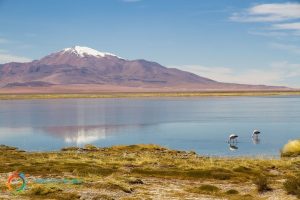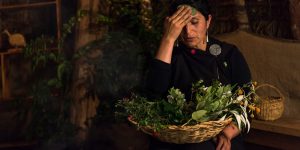Ancestral Travel: 5 Experiences with the Mapuche people
By: Chile Travel - 28 August, 2021

Located 700 kilometers south of Santiago, La Araucanía is a region shaped by volcanoes, rivers and lakes, but it is also the best place for getting to know the Mapuche people, the “people of the land.” In this article, we will tell you about 5 experiences with the Mapuche people available to you in the south of Chile.
The Mapuche people are the largest and most representative indigenous group in the country. The Araucanos —the name given to them by the Spanish— are some of the very few who understand the potential of the land beyond agriculture. For this reason, La Araucanía has been the site of ethnic tourism projects that give visitors the possibility of a cultural exchange, whether it be sleeping in a traditional Mapuche ruca, cooking with products collected and cultivated from their lands or participating in ancestral rituals is one of the best experiences with the Mapuche people.
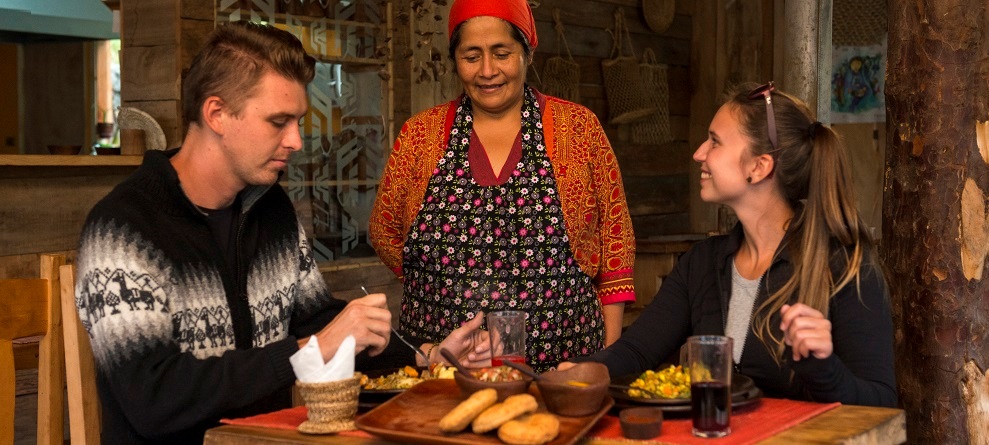
The Weaver of Curarrehue
Just 45 minutes by car from Pucón, you can find the workshop of Juanita Becerra, in Curarrehue. Surrounded by the brown, blue and green tones of the landscape, it is this same nature which inspires the work of the young Mapuche woman. For Juanita, color is directly related to happiness.
The weaver invites us to know her work, which she has been perfecting since she was only six years old. It was her mother who encouraged her to learn this ancient technique which combines loom weaving with felt. In the Mapuche culture, the tradition is that the parents and grandparents are the ones to transmit their knowledge to the youngest family members from an early age. In true Mapuche style, Juanita is involved in the entire process: she shears her sheep, washes the wool and dyes it with materials collected from her garden.
Loom weaving is the exclusive work of the Mapuche women. Juanita’s creations weave together symbols and the history of a community that refuses to go away. Originally, the woven drawings were not done at random: they could be used to tell a story or give specific information on someone’s social role, in a way that seems impossible to decipher by outsiders.
For Juanita, the elements around her —including the breathtaking view of the Curarrehue valley and the Trancura river— come to life through her creations: clothing, accessories and decorative pieces that visitors buy to take a little part of La Araucania back home with them. But it doesn’t stop there: the weaver also offers a guided tour of life in the country, inviting guests to know the animals and plants that inspire both her and her culture.
Here you have different kind of experiences with the Mapuche people.
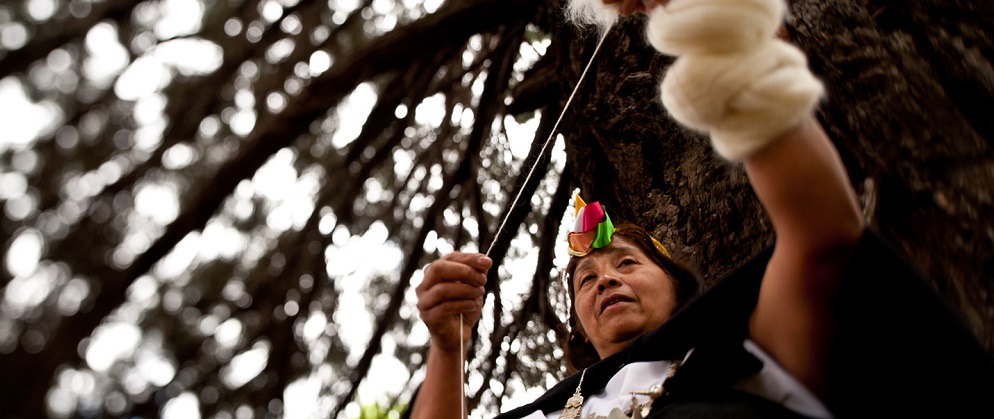
Traditional Culture and experiences with the Mapuche people
The restaurant “La Cocina de Elisa” (or Elisa’s Kitchen, in English) is located just across from the Plaza de Curarrehue. Built completely from wood, the shelves are filled with colorful jars of Chilean guava and rose hip marmalade, canned changle and nalca stalk, as well as many other products native to La Araucanía.
The forte of Elisa Cea Epuin is homemade pastries, and her star produce is the pine nut, produced by the araucaria trees which are native to the region. “I learned everything I know from my mother,” says Elisa proudly and with a large grin on her face. But it’s not just sweets. Another one of her specialties are fried empanadas filled with changle, an edible fungus native to the south of Chile used in many Mapuche dishes.
Some of the most famous indigenous dishes that bring people to La Cocina de Elisa are the digüeñe empanadas —another edible native fungus—, and pine nuts sautéed in merkén, a popular Mapuche spice made with a type of dried pepper known as the cacho de cabra.
Elisa invites us to try some digüeñe empanadas accompanied by muday, a traditional wheat beverage. It is this same passion and dedication to the Mapuche culinary tradition that has taken her to England, Ireland, Italy, Brazil and Peru to share her preparations made from ancestral recipes.

Sandra’s Ruca
Traditional food isn’t the only aspect of Mapuche tourism that is taking center stage today. Such is the case of Sandra Rain, who wanted to have her own ruca like her grandparents used to use, but which stopped being built in favor of more modern architecture of Western culture.
Sandra and her husband, Eusebio Tranamil, live in Lumaco, just an hour and a half from Temuco by car, and she is now living out her dream of showing visitors the Mapuche lifestyle through the ruca in her backyard. She first built the ruca with cooking in mind, although she never imagined it would become a tourism business.
A ruca is a place used for eating, sleeping and storage, but it can also be used as a center for community and family activities. It has no interior divisions, and the space is organized around the kütralwe, a stone firepit. The front door always faces to the East to greet the sun every morning, and the firepit is used to provide light and heat, and to cook.
Eusebio makes customized rucas, and takes around three months to build one working just three days a week. It seems like a simple job, but it could take months. Its construction requires the help of family members who, upon completion of the ruca, are compensated with a mingaco, a large party to celebrate solidarity and gratitude with an endless amount of food and chicha.
Visitors can spend time with Sandra and Eusebio, learn more about the rucas and enjoy traditional dishes prepared and eaten by the Mapuche, including sopaipillas, tortillas de rescoldo, muday and yerba mate. The family has used this business to recover and keep their ancestors’ customs alive, “without feeling embarrassed of our Mapuche heritage,” says Sandra. In the future, she plans to offer lodging and build more rucas.
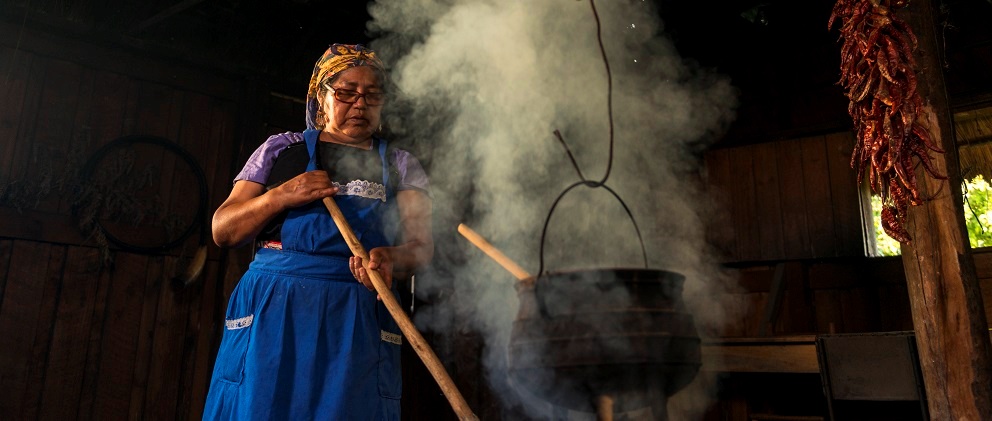
The Lafquenche river route of the coastal Mapuche people
Along with two other inhabitants of the region, María Victoria Ñancuán created a start-up to offer the Lafquenche river route, a tour that starts in Toltén and continues along the Boldo River to Queule. This route was historically used by the Mapuche for trading and exchanging products.
This tour is done aboard Victoria Benavente’s boat and takes us along a colorful path that looks like something out of a fairytale. The area is covered in wetlands, and is home to white heron, ducks, pitra and temo forests, and free-roaming cows.
At the end of the river route, María Victoria Ñancuán will be waiting for us at the pier used by the Tomás Ñancuán indigenous community, with traditional Mapuche clothing and silver accessories: the trarilonco, a silver headband made with a chain and pendants, and the trapelakucha, a breastplate covered in nature symbols. With a warm smile, María Victoria invites us to see her ruca, campsite and animals.
Visitors can spend a night in the ruca on a bed made of sheep’s wool and leather. In the morning, María Victoria takes them to collect eggs for breakfast and vegetables for lunch, in order to involve them in the daily activities of the Mapuche coastal life, like another member of the community.
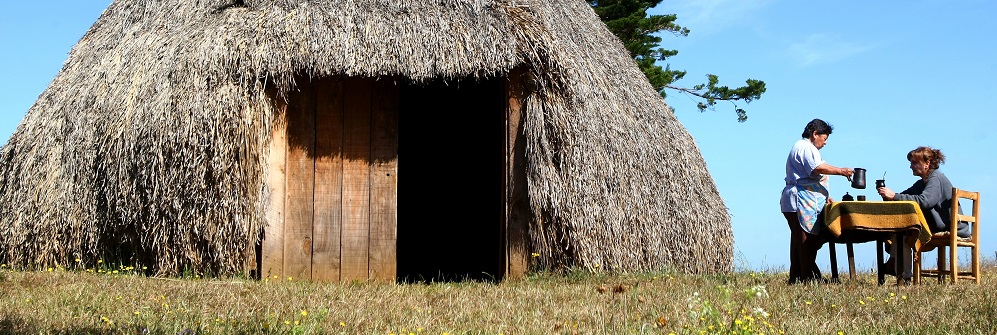
Lake Budi and Puerto Saavedra
Located between the towns of Saavedra and Teodoro Schmidt is Lake Budi, which is actually a lagoon made from the Pacific ocean waters and you can enjoy different experiences with the Mapuche people. Here the coastal Mapuche share their culture with guests, including arts and crafts, woven products, food and drinks, entertainment and excursions to the surrounding areas.
Close to Lake Budi you can find Puerto Saavedra, the main coastal city of La Araucanía. Here lives Lorenzo Aillapán, poet, musician and faithful representative of the Lafquenche culture. He is known in the community as the “Birdman” due to his talent for interpreting the song of the birds, and has traveled the world showing off his art.
“No bird sings for song’s sake,” claims Lorenzo when talking about this communication process, a reflection on the relationship between the Mapuche and their environment, where man feels like part of nature and not its owner. Lorenzo Aillapán was recognized as a UNESCO Living Treasure in 2012, for spreading the cultural values of the Mapuche through teaching, literary works and the interpretation of the bird songs through onomatopoeia.
Today, La Araucanía recognizes him as an important member of the community and has had a statue built of him in Saavedra. Outside his home, the sign reads “Pullumapu Kimun Lueftuy, renacimiento de la sabiduría ancestral” (in English, rebirth of ancestral knowledge), which invites guests to visit him and learn more about the Mapuche culture and the art of singing like the birds, and another experiences with the Mapuche people.
Through local representatives like Lorenzo, Mapuche tourism hopes to connect visitors with the most important aspects of its country: its people and its roots. These experiences with the Mapuche people are like traveling to the heart of Chilean history.
















